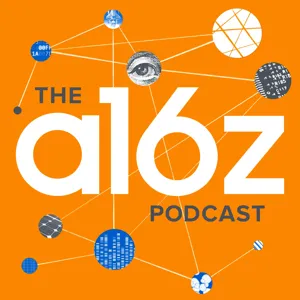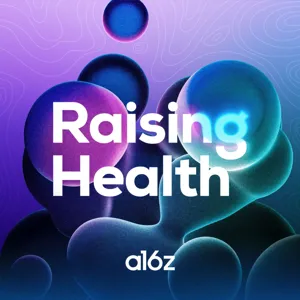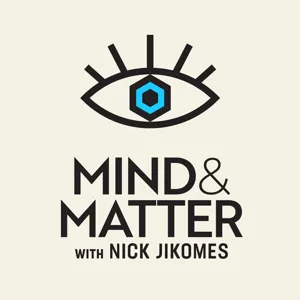Podcast Summary
Exploring the Advancements in Biology and Aging: The focus in aging research is shifting from extending lifespan to increasing health span, and existing drugs like metformin may hold potential for increasing both.
Biology, particularly the study of aging, is rapidly advancing and has the potential to revolutionize various aspects of our lives, from healthcare to everyday products. The field of studying aging, or biogerontology, is relatively new but is making significant strides in increasing our health span and potentially even slowing down aging. The episode "The Biology of Aging" from the new podcast "Bio Eats World" explores this topic, featuring guests Laura Deming, Kristin Fortney, and Vijay Pande. They discuss the history of the field, current research, and potential treatments for age-related diseases. One interesting point made in the episode is the distinction between health span and lifespan. While we may initially think about aging in terms of extending our lifespan, the focus is shifting to increasing health span, which is the amount of time we live in good health. The episode also touches on the potential of existing drugs, such as metformin, to increase our lifespan. Overall, the podcast highlights the exciting progress being made in the field of aging research and the potential for breakthroughs that could significantly impact our lives.
From worms to humans: Aging research progresses: The 1990s and 2000s brought significant advancements in aging research, but translating findings to humans has been a challenge. Recent progress includes the first clinical trials of drugs based on aging research, such as Metformin, and this decade is a critical period for realizing the benefits.
The field of aging research has come a long way since the early discoveries of calorie restriction and gene deletion in worms leading to extended lifespan. The 1990s and 2000s saw significant advancements, including the discovery of parabiosis in mammals and the identification of longevity genes in invertebrates. However, translating these findings to humans has been a challenge. Recent progress includes the first clinical trials of drugs developed in the context of aging biology, such as Metformin, which has been shown to decrease all-cause mortality in elderly patients. This decade is considered a critical period as patients begin to receive the benefits of these long-researched ideas. Despite the controversies and skepticism in the past, the field is gaining traction and making a real impact on extending human lifespan.
Approaches to Targeting Aging: Metabolic Disease and Damage: Metformin and other drugs targeting metabolic disease improve health and extend lifespan, while direct damage targets like senescent cells show promise in aging research. The field is categorized into three generations of companies, with the third generation focusing on novel targets and damage repair.
The field of aging research is rapidly evolving, with various approaches being explored to target different aspects of the aging process. One such approach is the use of drugs that impact metabolic disease, like Metformin, which has been shown to not only improve metabolic health but also extend lifespan and reduce cancer deaths. Another approach is targeting damage directly, such as senescent cells, which accumulate with age and contribute to various age-related diseases. The landscape of aging research can be categorized into three generations of companies. The first generation focuses on traditional pathways, such as insulin signaling, which are well-conserved across species and have already been targeted with existing modalities. The second generation screens for novel targets using high-throughput platforms and novel model organisms or screens. The third generation targets damage directly, such as senescent cells, without necessarily targeting an evolved pathway. While there have been some successes in extending lifespan in animal models, such as rapamycin, the potential for even greater impact lies in discovering new pathways and targets. The field is still largely unexplored therapeutically, and even mild effects, such as a few percent increase in lifespan, could have significant meaning for human health. The discovery and development of these new drugs and approaches are an exciting frontier in the field of aging research.
Mapping and analyzing molecules in human blood samples for healthy longevity prediction: Advancements in technology enable the discovery of reliable aging biomarkers for early intervention and personalized medicine, potentially leading to new therapeutic areas and improved overall health.
The field of aging research is rapidly evolving, with advancements in technology enabling the mapping and analysis of various molecules in human blood samples to predict healthy longevity. The development of reliable biomarkers for aging, like cholesterol for heart disease, could revolutionize the field by allowing for early intervention and personalized medicine. Furthermore, understanding individual differences in aging and targeting specific mechanisms for certain individuals could lead to new therapeutic areas and applications beyond just anti-aging treatments. This paradigm shift extends beyond scientific and clinical perspectives, impacting healthcare delivery as well. By learning about aging, we can not only improve overall health but also potentially cure diseases associated with aging such as cancer and Alzheimer's.
Studying complex diseases in the context of aging could lead to new targets and treatments: Exploring complex diseases like Alzheimer's, cancer, heart disease, and stroke in the context of aging could uncover new targets for drug development, potentially leading to fundamental treatments and significant impact on multiple diseases.
The approach to treating and curing complex diseases like Alzheimer's, cancer, heart disease, and stroke may need a radical shift. Current methods, such as studying these diseases in young animals or targeting specific proteins with small molecules, have not been effective. Instead, it is crucial to study these diseases in the context of aging. This new perspective could lead to the discovery of targets that are currently out of reach with traditional drug design methods. These targets, if identified, could potentially be used to develop drugs that treat aging fundamentally and could have a significant impact on multiple diseases. The beauty of this approach is that it can be integrated into the existing healthcare system, with indications for the biggest killers, such as Alzheimer's, where there is currently no drug available. These drugs could potentially delay or even reverse the phenotype of early-stage diseases like mild cognitive impairment. While the reversal of aging is an exciting prospect, even slowing down the progression of these diseases would be valuable. The biggest hurdle is understanding the biology of aging, but once the right targets are identified, they can be easily integrated into existing pharmaceutical programs. The history of pharmaceuticals suggests that new technologies and trends come and go, and it is an interesting question when longevity will become the next hot trend in the industry.
The same compound can impact multiple diseases due to aging's role as a causal driver.: Anti-aging therapeutics could potentially address various diseases by targeting the root cause of aging.
Some compounds being developed for aging may have broad impact across multiple diseases due to the fundamental connection between aging and various health conditions. This concept is not magical but based on precedents, such as Benadryl and Unisom, which are the same drug sold for different purposes. The aging process itself can be considered a causal driver of many diseases, including immune aging, which weakens the immune system and makes individuals more susceptible to other health issues. From an evolutionary perspective, the existence of genetic pathways controlling aging may suggest that living longer and staying healthy is beneficial for reproduction and survival. Therefore, it's plausible that anti-aging therapeutics could potentially address various diseases by targeting the root cause of aging.
Predicting and preventing aging-related diseases with biomarkers: More research is needed to make biomarkers a reality for predicting and preventing aging-related diseases, with the ultimate goal of minimizing these diseases and potentially extending health span.
The field of aging and longevity biology is rapidly advancing, but there are challenges in implementing these discoveries into the healthcare system as preventative measures. The use of biomarkers to predict and prevent aging-related diseases is a potential solution, but more research is needed to make this a reality. Ultimately, the goal is to minimize aging-related diseases and potentially extend the health span of the population. This could lead to a future where no one develops disease before a certain age. However, achieving this will require a solid biomarker that clinicians fully trust. The comparison was made to how plumbing and sanitation have been fundamental for human health, and the potential of longevity biology to take it to the next level.
Recognizing aging as a health issue and testing therapies to delay it: This pivotal moment in history could lead to cost savings and improved health outcomes by delaying aging and disease onset through clinical trials. Accessibility and affordability of biotech enable more entrepreneurs to innovate.
We are at a pivotal moment in history where aging and related diseases are being recognized as significant health issues, and clinical trials are being conducted to test therapies that could potentially delay aging and disease onset. This paradigm shift, which is similar to how the understanding and treatment of conditions like osteoporosis have evolved, could lead to significant cost savings and improved health outcomes. The accessibility and affordability of biotech have also increased, enabling more entrepreneurs to start companies and develop innovative therapies. While we await the results of these trials, it's essential to continue investing in and supporting research in this area to unlock the potential for significant advancements in healthcare.
Opportunities in Biology of Aging for Entrepreneurs: Entrepreneurs can choose from various therapeutic areas in biology of aging, new mechanisms are in demand, diverse backgrounds are valuable, and the landscape is evolving for longevity startups.
The field of biology of aging, while presenting unique challenges due to its newness and uncertainty, also offers immense opportunities for innovation and disruption. Entrepreneurs face the difficult task of choosing a therapeutic area to focus on, but this uncertainty also means there are opportunities to build something new and optimized. There is a growing awareness and appetite for novel mechanisms in this space as well. The landscape is changing, with an increasing number of founders coming from diverse backgrounds, including biology, machine learning, and even the tech industry. The ability to combine these areas of expertise is becoming increasingly valuable. As the culture and talent landscape continues to evolve, it's clear that anyone who's passionate about impacting longevity should consider starting a company in this field.





